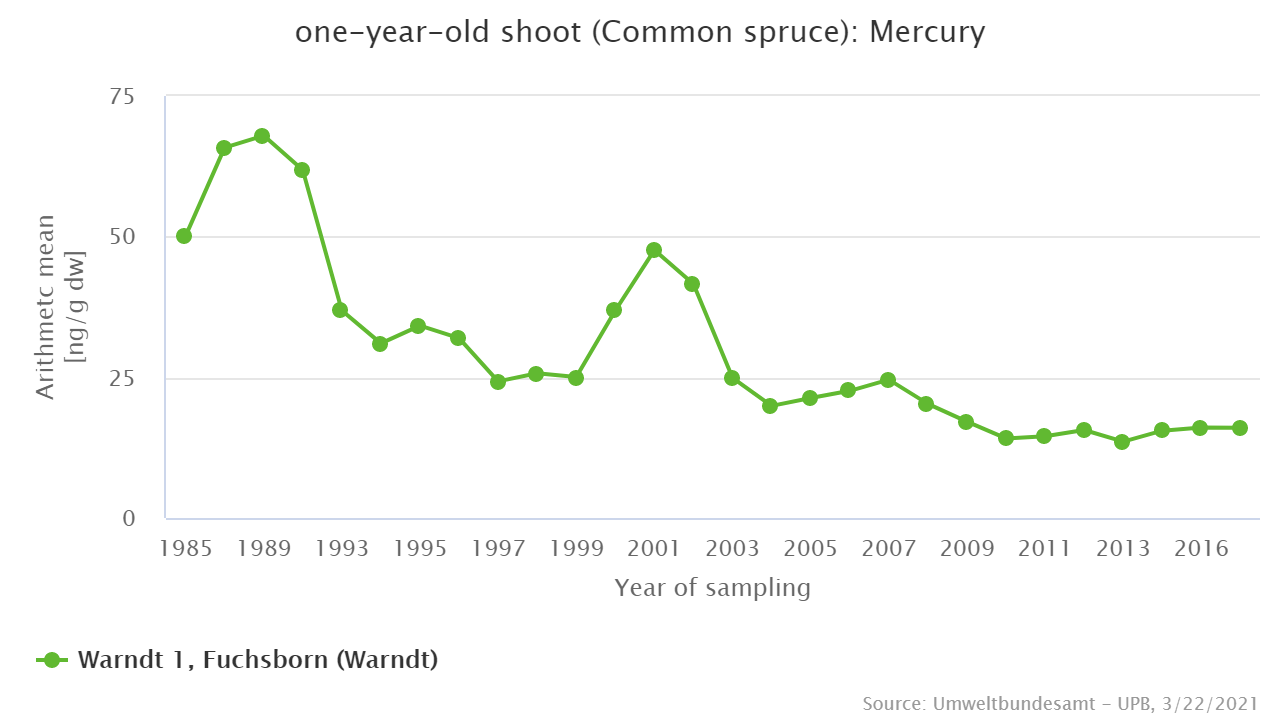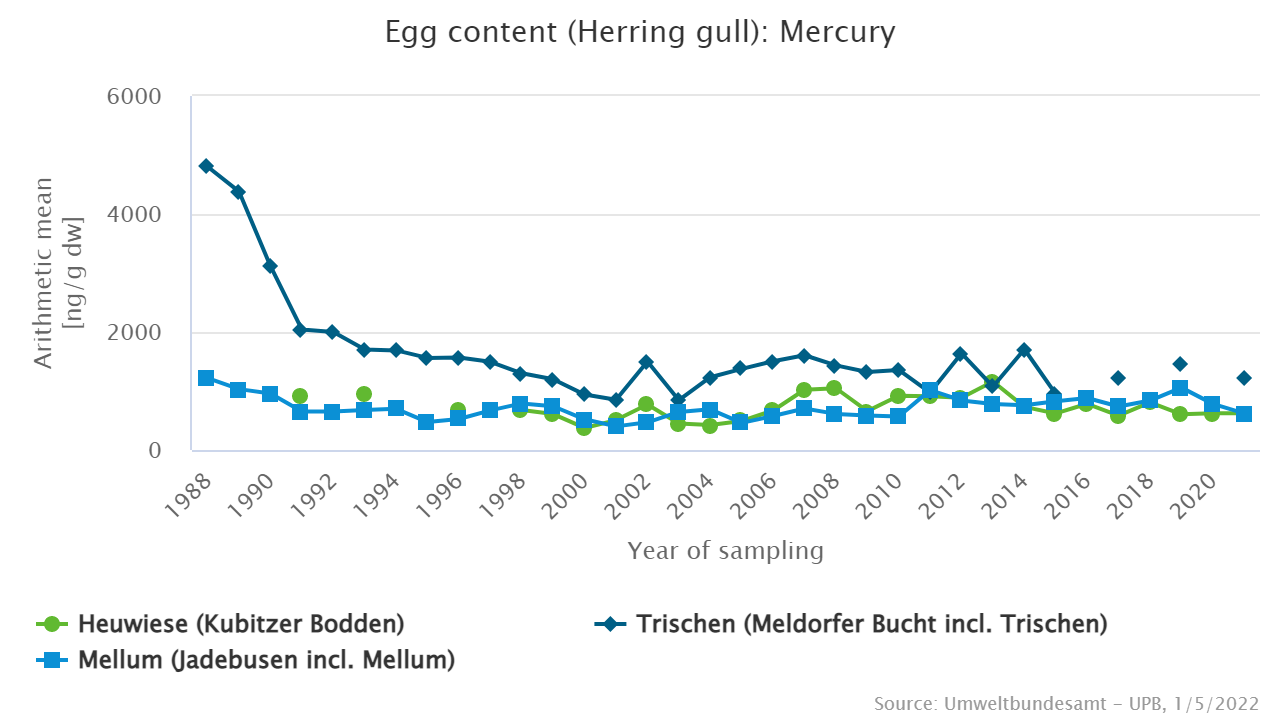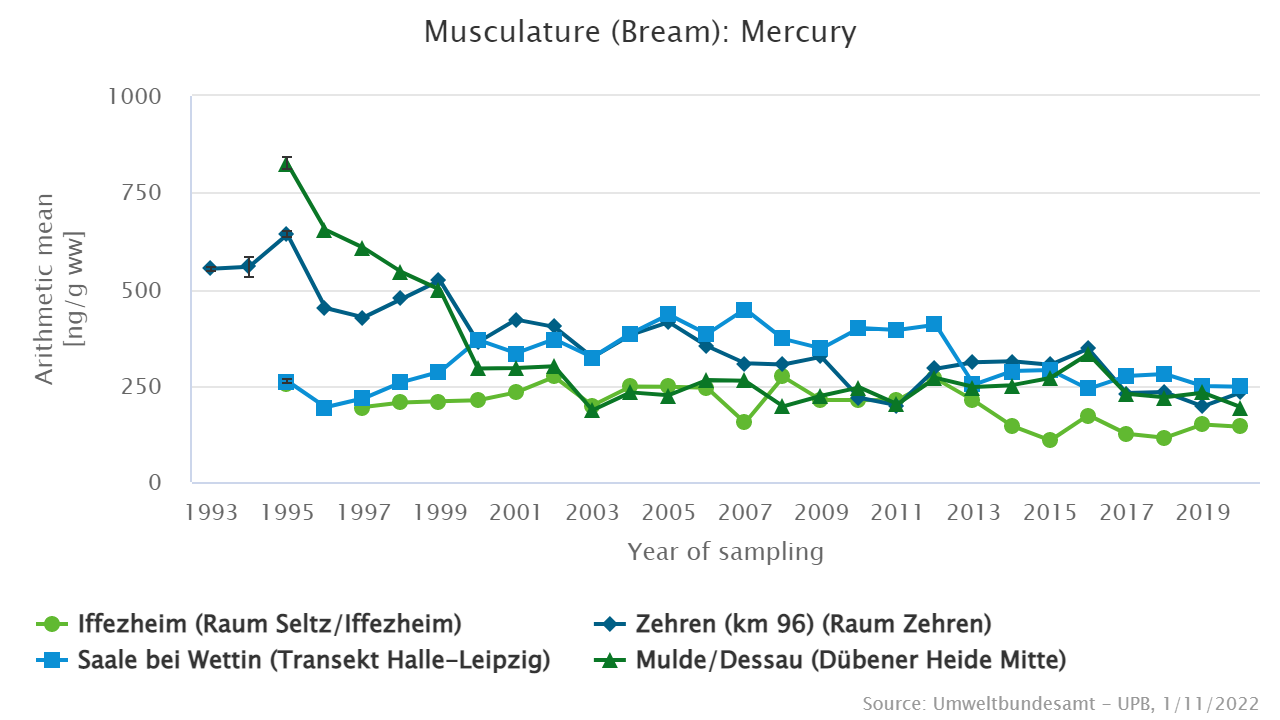Mercury contamination of environmental specimens
From 1985 to 1995, mercury emissions in Germany have decreased by two-thirds. As a result, the state of the environment has improved significantly.
Since the late 1980s mercury levels in spruce shoots from the Saarland conurbation have declined considerably. A similar trend is apparent for herring gull eggs from the North Sea. In herring gull eggs from the Baltic Sea, however, mercury has increased slightly. Decreasing mercury levels are also detected in bream from Rhine, Elbe and Mulde whereas contamination of breams from the rivers Saar and Saale have increased slightly since the mid 1990s.
Mercury contamination of spruce
Since the late 1980s mercury in spruce shoots from the Saarland conurbation has decreased by about 70%.

Mercury contamination of herring gull eggs
Mercury in herring gull eggs from the Schleswig-Holstein Wadden Sea (sampling site Trischen) has decreased by about 70% since the late 1980s. A comparable trend is found for eggs from the Lower Saxony site Mellum (approximately 50 % decrease). In 2011, however, we found high mercury levels. So far, there is no explanation for this increase; this finding is confirmed by analysis of egg samples from 2012.
In contrast, mercury levels in eggs from the Baltic Sea were about 3% higher in 2012 than in 1993.
Overall, mercury concentrations detected in the eggs of herring gulls no longer represent unusually high levels of contamination.

Mercury contamination of bream
Since the mid 1990s mercury levels in bream from Rhine, Elbe and Mulde have decreased. In contrast, contaminations of bream from the rivers Saar and Saale have increased slightly. Figure 3 shows this exemplarily for the Elbe tributaries Mulde and Saale.

Display all data of the result description
Evaluation of mercury contamination of bream
In 2020 bream from all sampling sites had mercury levels far below the maximum levels for foodstuffs, i.e. 500 ng/g wet weight (ww).
The more stringent environmental quality standard for mercury in biota (20 ng/g ww), however, was failed by all samples.
Updated at: 2022-01-11
Recommended profiles
Specimen
-
A major primary producer in semi-natural and anthropogenic affected ecosystems.
-
Bioindicator in rivers and lakes
-
Inshore, the herring gull mainly feeds from the sea: upon fish, mussels, and crabs.
Analytes
-
Naturally occurring highly toxic transition metal, which is liquid at standard conditions for temperature and pressure
Sampling area
-
Only sampling site of bream in the river Saale
-
Sampling site of bream in the river Mulde
-
Closed mixed forest
-
Bird protection island in the northern part of the Kubitzer Bodden.
-
Bird island in the Schleswig-Holstein Wadden Sea
-
Bird island in the Lower Saxon Wadden Sea
Extended information
Links to external information and legislation
- Directive 2013/39/EU of the European Parliament and of the Council of 12 August 2013 amending Directives 2000/60/EC and 2008/105/EC as regards priority substances in the field of water policy (external)
- Commission regulation (EC) No 1881/2006 of 19 December 2006 setting maximum levels for certain contaminants in foodstuffs (external)